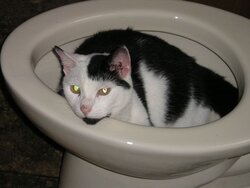I have a Fisher wood stove and I am wondering if I can connect the stainless chimney liner directly to the back of the wood stove exhaust collar using screws? My existing stainless chimney liner does NOT have any insulation, it's just the steel liner running up the entire length of the chimney that is only ten years old. Should it be insulated or it that not needed? Looking for opinions. Thank you.
Can a stainless liner be connected directly to wood stove?
- Thread starter Neil-V1
- Start date
-
Active since 1995, Hearth.com is THE place on the internet for free information and advice about wood stoves, pellet stoves and other energy saving equipment.
We strive to provide opinions, articles, discussions and history related to Hearth Products and in a more general sense, energy issues.
We promote the EFFICIENT, RESPONSIBLE, CLEAN and SAFE use of all fuels, whether renewable or fossil.


